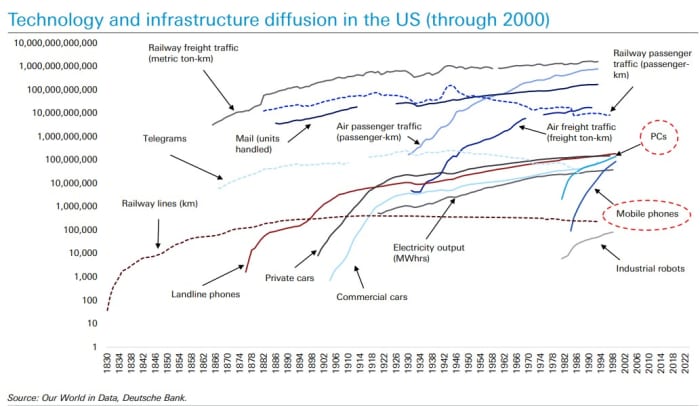A favorable consumer price index report for April lifted investors’ hopes for rate cuts from the Federal Reserve – and that environment could prove favorable for dividend-paying stocks.
A lower interest rate environment makes dividend payers more compelling to income investors, especially because those stocks would be offering competitive yields versus those of Treasurys.
Recent results reported by several dividend-paying companies have proved their resilience and the ability to pay dividends despite a tough macro backdrop.
Bearing that in mind, here are three attractive dividend stocks, according to Wall Street’s top pros on TipRanks, a platform that ranks analysts based on their past performance.
Ares Capital
The first stock on this week’s list is Ares Capital (ARCC), a company that focuses on financing solutions for small- and middle-market companies. On May 1, the company announced its first-quarter results and declared a quarterly dividend of 48 cents per share, payable on June 28. ARCC stock offers an attractive dividend yield of 9.1%.
Following the results, RBC Capital analyst Kenneth Lee reaffirmed a buy rating on ARCC stock with a price target of $22. While the company’s core earnings per share slightly missed the analyst’s estimate, he noted that first-quarter portfolio activity, including originations, was much greater than his expectations in what is generally observed to be a seasonally slower quarter.
The analyst added that the credit performance in ARCC’s portfolio continues to be strong. While the non-accrual rate increased slightly quarter over quarter, it still remained low at 1.7% of the portfolio compared to the industry average of nearly 3.8%.
“We maintain our Outperform rating, as we favor ARCC’s strong track record of managing risks through the cycle, well-supported dividends, and scale advantages,” said Lee.
Overall, Lee is bullish on ARCC due to its scale and capital position, access to the resources of the broader Ares Credit Group platform, experienced leadership team, and expectations that it can deliver annualized return on equity above peer averages.
Lee ranks No. 40 among more than 8,800 analysts tracked by TipRanks. His ratings have been successful 71% of the time, with each delivering an average return of 17.2%. (See Ares Capital’s Ownership Structure on TipRanks)
Brookfield Infrastructure Partners
Next up is Brookfield Infrastructure (BIP), a leading global infrastructure company that owns and operates diversified, long-life assets in the utilities, transport, midstream and data sectors. The company recently announced its first-quarter results and declared a quarterly distribution of $0.405 per unit.
This quarterly distribution marks a 6% year-over-year increase and is payable on June 28. With an annualized distribution of $1.62 per unit, BIP offers a yield of 5.3%.
Following the Q1 print, BMO Capital analyst Devin Dodge reaffirmed a buy rating on BIP stock, stating that the first-quarter results were largely in line with expectations. However, the analyst lowered his price target to $36 from $40 to reflect the impact of higher interest rates on the stock’s valuation.
Dodge noted that Brookfield’s investment in container-leasing company Triton International is exceeding its underlying assumptions. BIP’s transport business is benefiting from the Triton acquisition as the Red Sea crisis has led to the lengthening of some shipping trade routes and increased global demand for containers.
Meanwhile, the analyst expects BIP’s capital deployment to be focused on tuck-in opportunities in its existing businesses. He highlighted that the company’s acquisition pipeline also includes large-scale opportunities focused on Asia-Pacific, North America and Europe. The analyst expects new investment activity to pick pace through 2024.
“We believe BIP’s portfolio companies are performing well, the yield is attractive and valuation appears undemanding,” said Dodge.
Dodge ranks No. 582 among more than 8,800 analysts tracked by TipRanks. His ratings have been profitable 68% of the time, with each delivering an average return of 10.6%. (See Brookfield Infrastructure’s Insider Trading Activity on TipRanks)
Realty Income
This week’s final dividend pick is Realty Income (O). It is a real estate investment trust that invests in diversified commercial real estate and has a portfolio of over 15,450 properties in the U.S. and seven countries in Europe.
On May 15, the company paid a monthly dividend of $0.257 per share. Overall, based on the annualized dividend amount of $3.08 per share, the stock’s dividend yield stands at 5.6%.
In reaction to Realty Income’s first-quarter results, RBC Capital analyst Brad Heffern reiterated a buy rating on Realty Income stock with a price target of $58. The analyst noted that Q1 2024 results slightly exceeded his expectations, marked by an impressive capitalization rate of 8.2% on acquisitions.
Heffern added that the vast majority of the first-quarter acquisitions were in Europe, with the region accounting for 95% of the acquisition volumes. The company attributed the opportunity in Europe to improved confidence in the macroeconomic outlook and motivated sellers. In comparison, higher interest rates and macro uncertainty in the U.S. affected Q1 deal volumes. That said, the company expects the U.S. volumes to pick up in the second half, with a clearer picture of interest rates and the macro outlook.
“We think O has one of the highest-quality net lease portfolios in the space, with an above-average investment grade weighting, a strong industrial portfolio, and a high proportion of tenants with public reporting requirements,” said Heffern.
Heffern ranks No. 505 among more than 8,800 analysts tracked by TipRanks. His ratings have been profitable 48% of the time, with each delivering an average return of 12%. (See Realty Income Stock Buybacks on TipRanks)
Source link
#Top #Wall #Street #analysts #dividend #stocks #high #yields










































